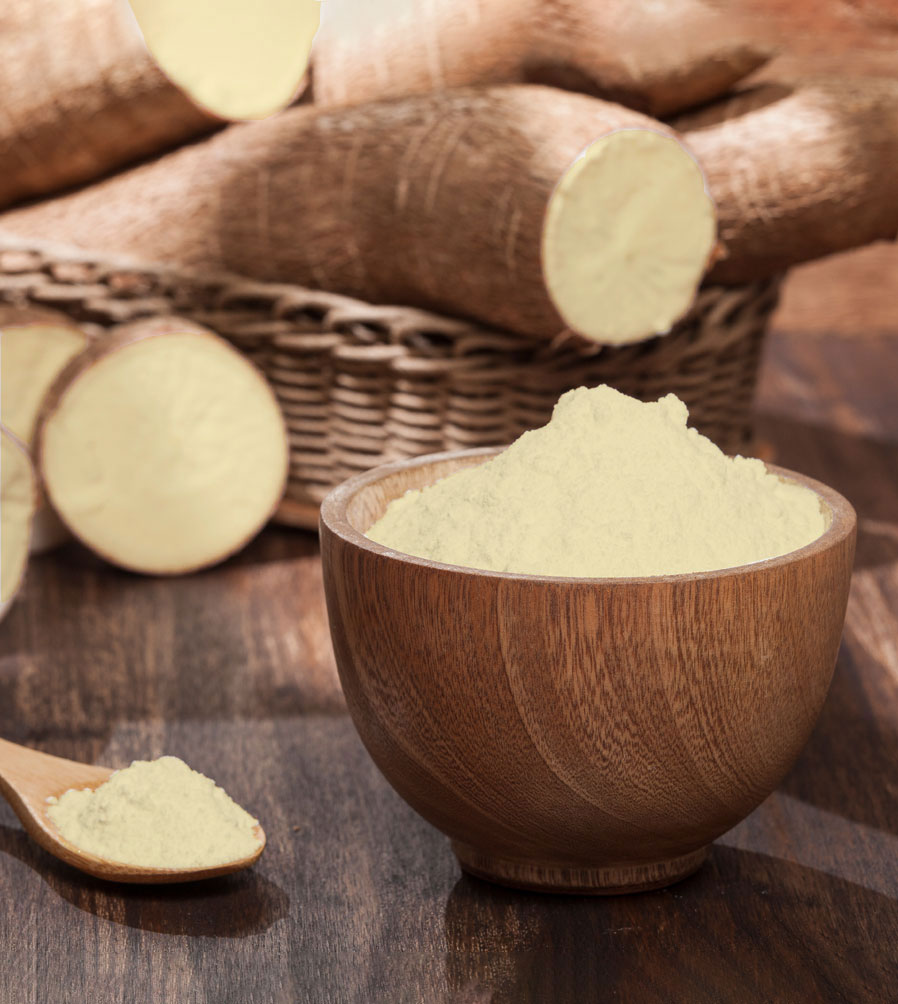Cassava is a climate-smart, adaptable crop that will grow on marginal soils and is able to withstand disease and drought. This makes cassava an important staple food for hundreds of millions of people around the world, especially among lower-income communities in Africa and Latin America.
Nutritional Benefit
Provides up to 100 percent of daily vitamin A needs for women of reproductive age and children when eaten regularly
Varieties Released to Date
Latin America: 3
Countries: Brazil
Africa: 19
Countries: Cameroon, DR Congo, Nigeria, Sierra Leone, Ghana
Total Households Growing (2021)
2.6 million
CGIAR Breeding Partners: The International Institute of Tropical Agriculture (IITA) and The Alliance of Bioversity International and CIAT
Vitamin A deficiency increases the risk of diseases such as diarrhea and measles and, when severe, can even lead to blindness in children. Cassava with higher levels of provitamin A has been shown to improve the vitamin A status of children when consumed boiled and mashed.
HarvestPlus works Bioversity/CIAT and IITA to support National Agricultural Research institutes and other interested partners to breed, test, and release varieties of vitamin A cassava in countries where cassava is a key staple food.
Processing vitamin A cassava for Garri was one of the best experiences in our business. The quality appeared different from the other Garri mixed with palm oil. It has a great smell and taste. Our customers noted the sweetness and bought more of it. We have planted more of the vitamin A cassava in our farms and hope for a great yield.” Kaduna State, Northwest Nigeria

EPE Cassava Enterprise Project (Dangote Group):
HarvestPlus in partnership with Dangote Group collaborated on an 18-month project to revolutionize the cassava sector and improve livelihoods in the Ibeju-Lekki area of Lagos State. The project deliverables included the training and set up of selected beneficiaries in four key agro-enterprises, namely commercial seed production, weed control, gari & fufu processing and combobite processing. Selected beneficiaries from five communities (Mojoda, Ejirin, Freezone, Ishala and Iba-oloja) were engaged in various activities geared towards building their capacities to ensure they are profitably engaged in the cassava sector.
HarvestPlus Varieties Released Database
Explore the database for details on all HarvestPlus-promoted vitamin A cassava varieties that have been released by country.
learn moreBiofortification Priority Index
View an interactive map developed by HarvestPlus to show where investments in vitamin A cassava are likely to have the greatest impact on nutrition and health.
learn moreGlobal Crop Map
This interactive map shows which types of biofortified crops are available or in testing around the world.
Learn More
Nutrition Information and Evidence
Baseline vitamin A concentration in non-biofortified varieties: 0 parts per million (PPM)
100% target concentration of vitamin A in vitamin A Cassava varieties: 15 PPM
Bioavailability of vitamin A in vitamin A-biofortified Cassava varieties: 20%
Vitamin A cassava retains more vitamin A when boiled or steamed than when baked or fried. Over months, stored biofortified cassava grains can lose most of their vitamin A content and should therefore be eaten soon after harvest.
Biofortified cassava contains enough vitamin A to contribute to improved nutritional status and reduce vitamin A deficiency.
Eating vitamin A cassava increases children’s vitamin A intake and status.

Vitamin A Cassava in the Value Chain
This brochure describes the benefits of vitamin A cassava for consumers and food businesses, and how to integrate it into production and marketing.
Learn moreVitamin A Cassava in Food Value Chains
HarvestPlus partners with processors and consumer food businesses, primarily SMEs, to develop and market products made with biofortified ingredients.

Gari

Snacks

Flour

Contact Our Crop Experts
They are available to provide more information about vitamin A cassava regarding: nutritional and agronomic characteristics, growing and harvesting, processing techniques, marketing strategies, and connecting with seed and/or crop suppliers and buyers
Contact our Experts